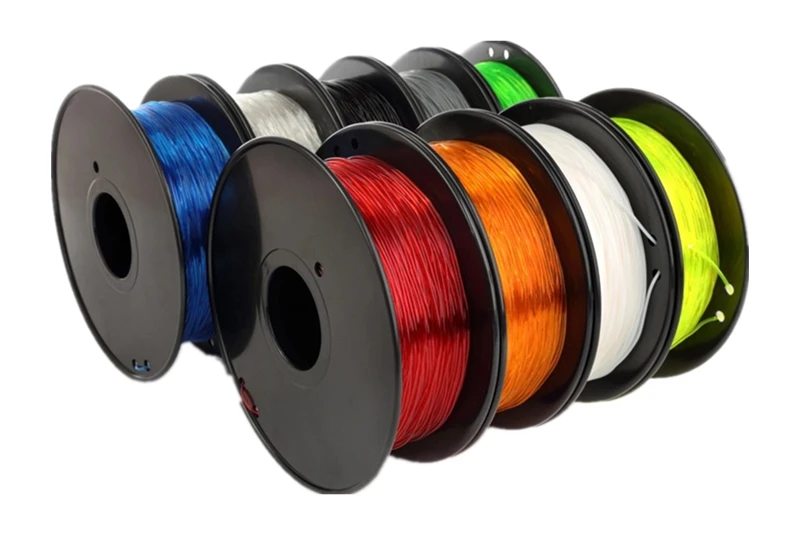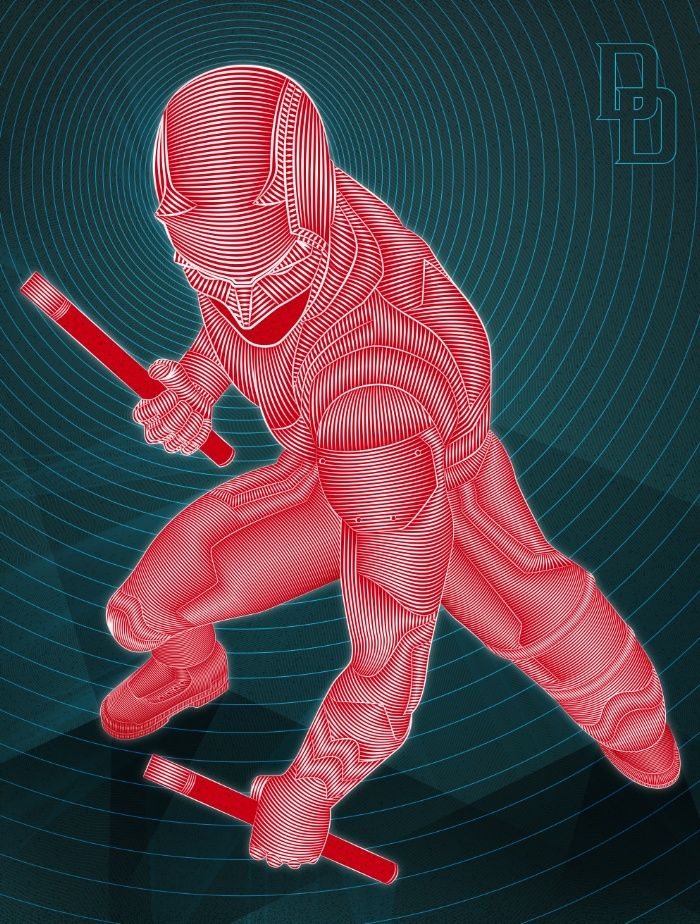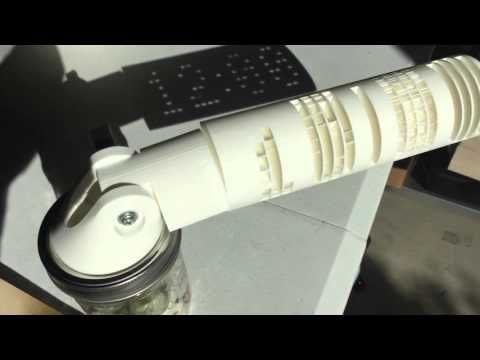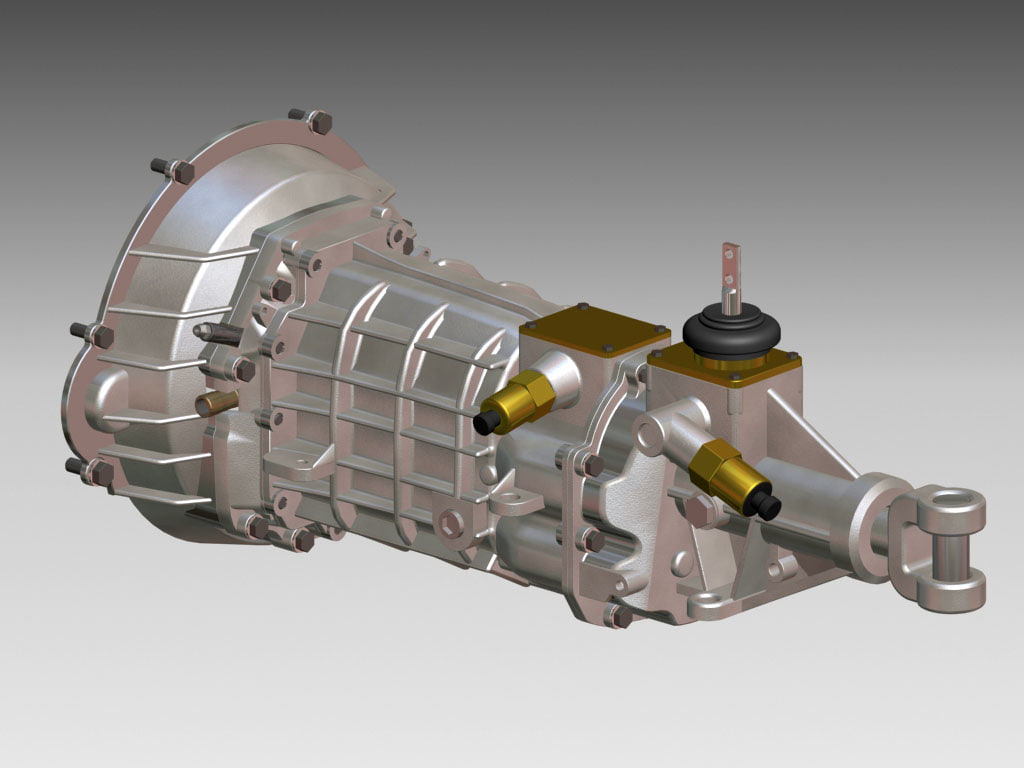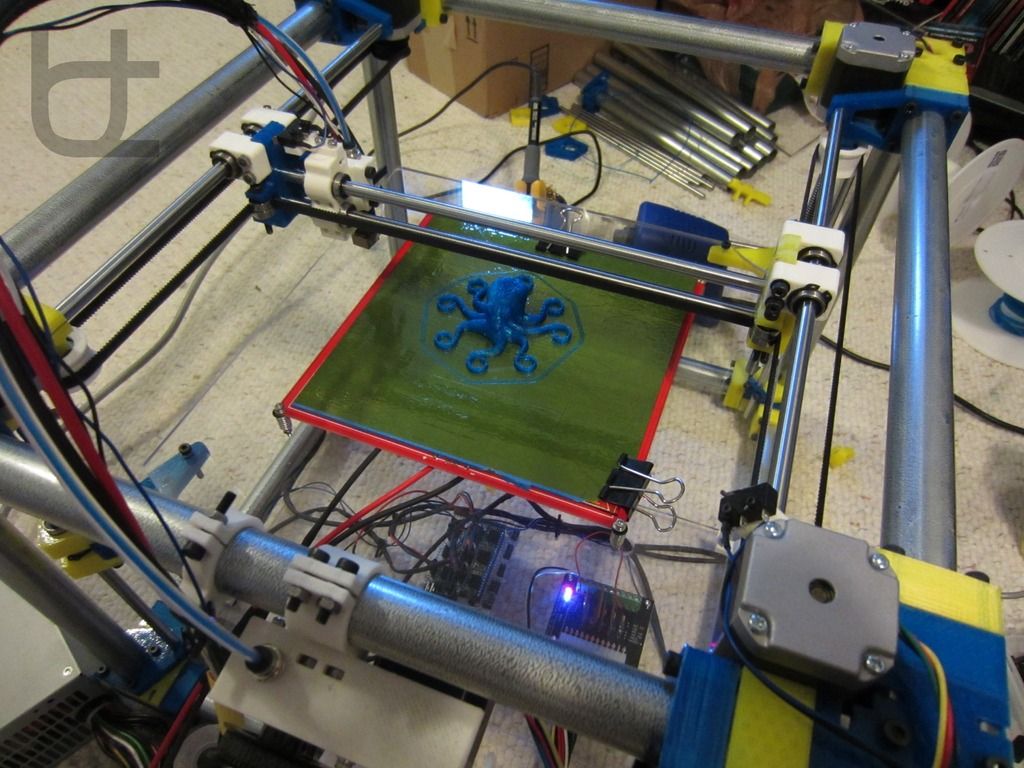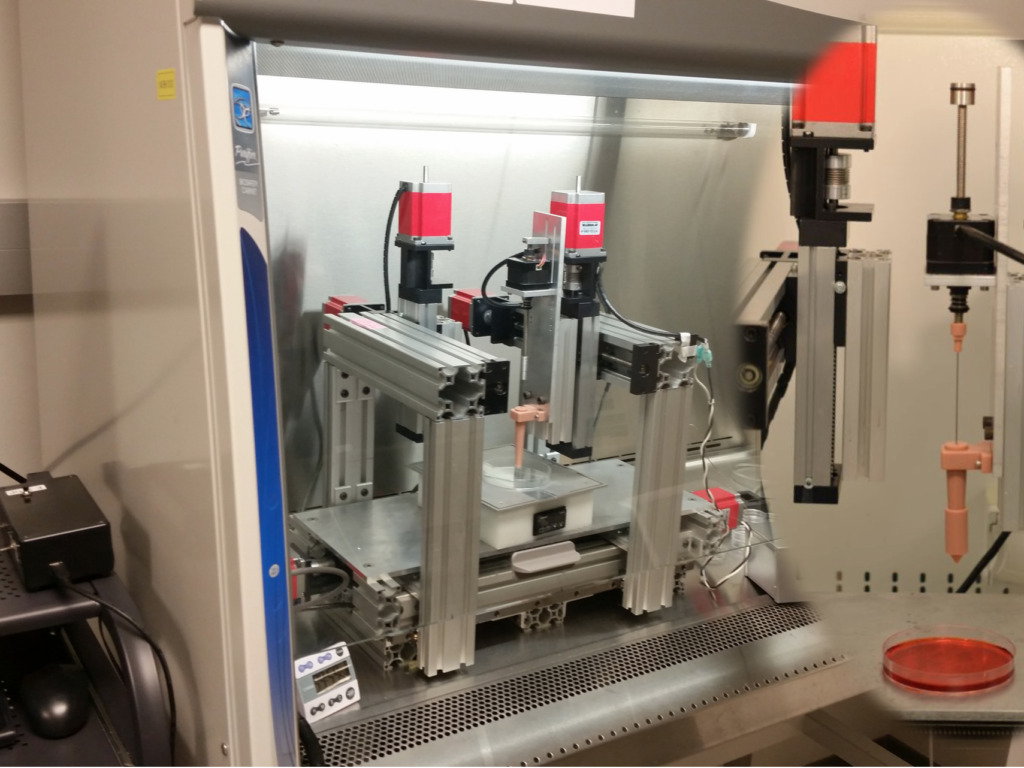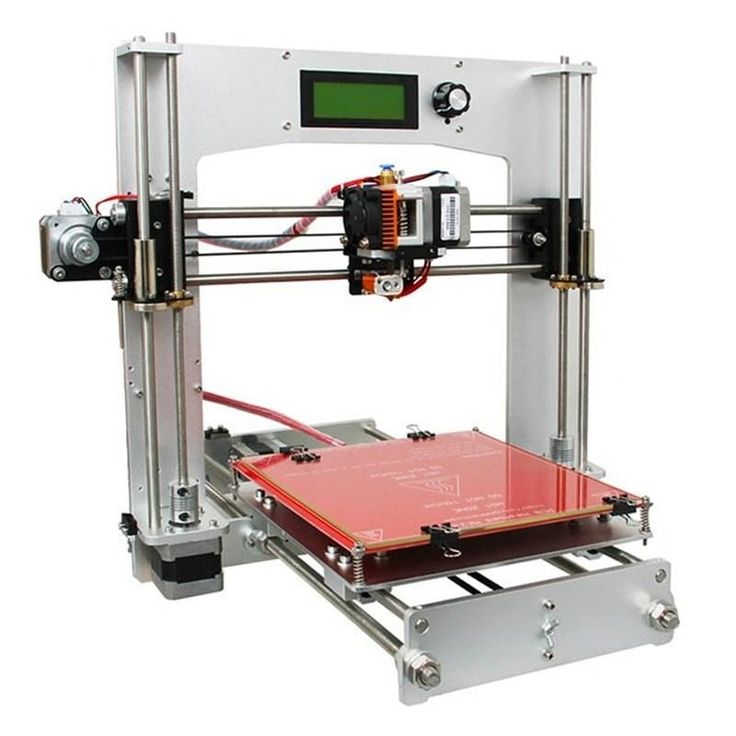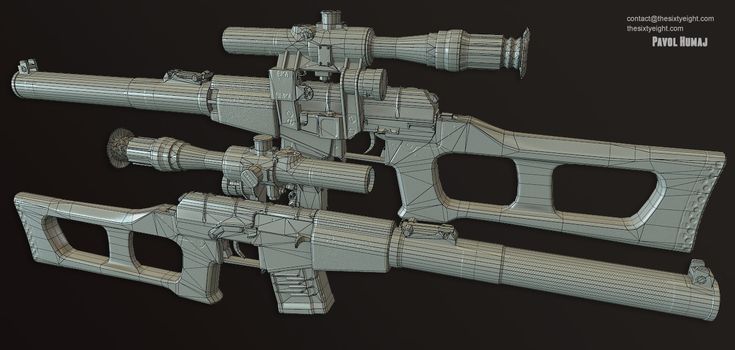3D printed firearms
What Are 3D-Printed Guns, and Are They Legal?
For decades, weapons manufacturing has been the domain of arms industry heavyweights: Glock, Sig Sauer, Remington, Sturm, Ruger & Co. Making a gun from scratch at home required thousands of dollars of machining equipment and years of engineering expertise.
But in recent years, that has begun to change. Advancements in 3D-printing technology have yielded increasingly reliable 3D-printed firearms, many of which require no federally regulated components to function. Below, we break down the basics of plastic, 3D-printed firearms, and the controversy generated by the swelling movement to deliver them to the masses.
What is a 3D-printed gun?In the simplest terms, it’s any firearm that includes components manufactured with a 3D printer.
But 3D-printed guns vary a lot. Some models — like the 3D-printed gun company Defense Distributed’s “Liberator” — can be made almost entirely on a 3D printer. Others require many additional parts, which are often metal. For example, many 3D-printed gun blueprints focus on a weapon’s lower receiver, which is basically the chassis of a firearm. Under federal law, it’s the only gun part that requires a federal background check to purchase from a licensed dealer. To subvert regulators, some people print lower receivers at home and finish their guns using parts that can be purchased without a background check — metal barrels, for example, or factory buttstocks. Many gun retailers sell kits, which include all the components necessary to assemble a gun at home.
Advances in printing technology have driven the price of 3D printers down — they’re now around $200 on Amazon — and gun groups offer guides for getting started. These developments have lowered the barriers to entry for those in search of untraceable guns, which have turned up at crime scenes with increasing frequency over the past few years.
The process still remains more involved than most methods of obtaining a firearm, though.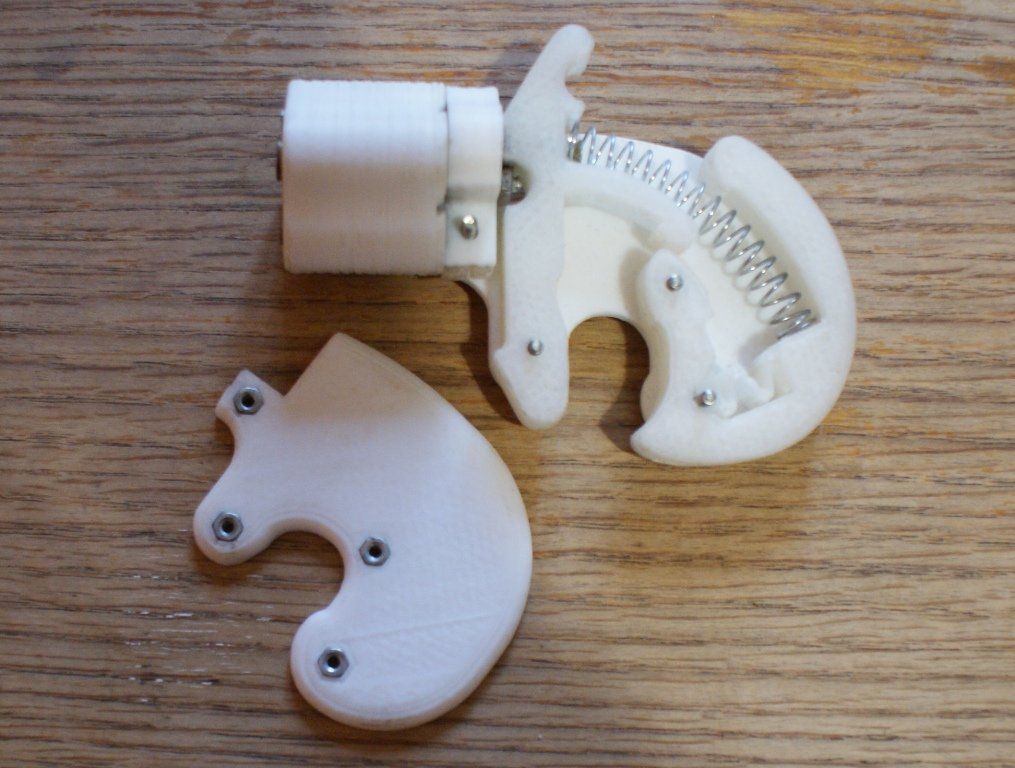 For instance, 3D printers require meticulous setup — the component that extrudes plastic must be calibrated, software must be downloaded to convert designs into 3D-printable slices, and the printer must undergo a slew of upgrades to reliably print weapons parts, which themselves require precise construction to ensure they can contain the explosion from a gunshot.
For instance, 3D printers require meticulous setup — the component that extrudes plastic must be calibrated, software must be downloaded to convert designs into 3D-printable slices, and the printer must undergo a slew of upgrades to reliably print weapons parts, which themselves require precise construction to ensure they can contain the explosion from a gunshot.
Because 3D-printed guns are made outside traditional supply chains, and don’t require background checks, they’re effectively invisible to law enforcement agencies. They are a form of ghost gun: unserialized, and unable to be traced if recovered by law enforcement.
There isn’t good data on the number of 3D-printed firearms that have turned up at crime scenes, though state attorneys general opposed to the technology insist that some have been recovered. On a few occasions, crimes involving the guns have made headlines. In February 2019, police arrested a Texas man after he was found test-firing a 3D-printed gun in the woods. He was prohibited from purchasing firearms and had a hit list of lawmakers on him.
He was prohibited from purchasing firearms and had a hit list of lawmakers on him.
Of particular concern to many law enforcement agencies are guns that can be completely 3D-printed at home without metal components. Politicians and law enforcement professionals fear that such guns would be able to evade metal detectors, and thus slip into places where firearms are prohibited, like airports or government buildings. At present, these fears are largely unfounded — 3D-printed gun designers have yet to develop an alternative to metal bullets, and security officials say that X-ray detection in place alongside most metal detectors can identify the outline of 3D-printed firearms with ease. Indeed, Transportation Security Administration officers have seized 3D-printed firearms at airports on several occasions.
Still, the weapons’ lack of traceability has already caught the attention of terror groups, according to Mary McCord, a former U.S. attorney and prosecutor in the Department of Justice’s National Security Division.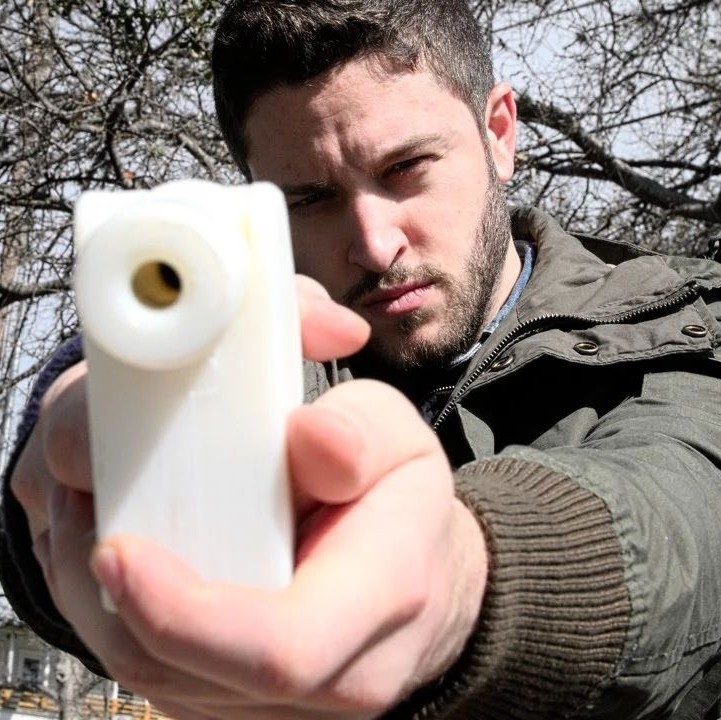 “We know from a counterterrorism perspective that there’s great interest among terrorist organizations in being able to have workable, usable, efficient, functioning 3D-printed weapons.”
“We know from a counterterrorism perspective that there’s great interest among terrorist organizations in being able to have workable, usable, efficient, functioning 3D-printed weapons.”
In most cases, yes. Federal law permits the unlicensed manufacture of firearms, including those made using a 3D printer, as long as they include metal components.
In the absence of federal regulation, a handful of states have taken their own steps to clamp down on the creation of homemade guns. In California, anybody manufacturing a firearm is legally required to obtain a serial number for the gun from the state, regardless of how it’s made. In New Jersey, you are supposed to obtain a federal manufacturing license before 3D-printing a gun. The state also criminalizes the manufacture, sale, or possession of undetectable firearms, and made it illegal to purchase parts to make an unserialized gun. Several states — including New Mexico and Virginia — are considering bills that would enact similar restrictions.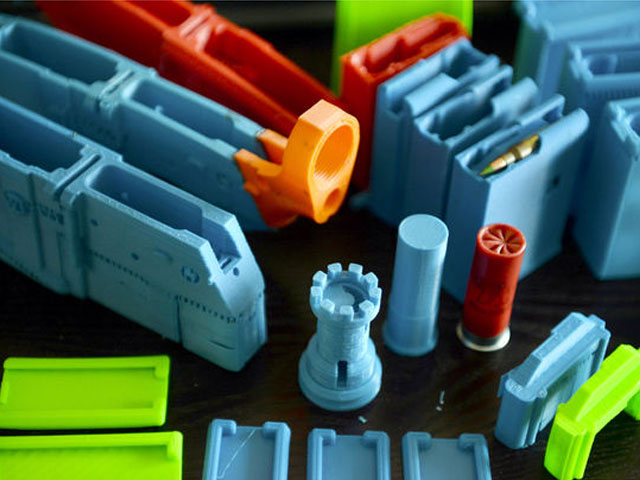
The legality of sharing the files required to print guns and gun components is murkier territory. No federal legislation bans the practice. But in 2013, the State Department ruled that releasing blueprints online violated arms export laws. In 2018, after a lengthy court battle with Defense Distributed over the guidance, the State Department settled, and agreed to permit the files’ release. But before the prohibition was lifted, a coalition of states sued to keep it in place — and won. Now, gun groups intent on sharing the files online have exploited a loophole in the State Department’s policy, which allows for the distribution of blueprints exclusively to U.S. residents. Defense Distributed maintains it has established a vetting procedure to ensure only U.S. residents are able to download them.
In 2019, the Trump administration transferred oversight of gun exports from the State Department to the Commerce Department, which would have rolled back restrictions on releasing 3D-printed gun blueprints.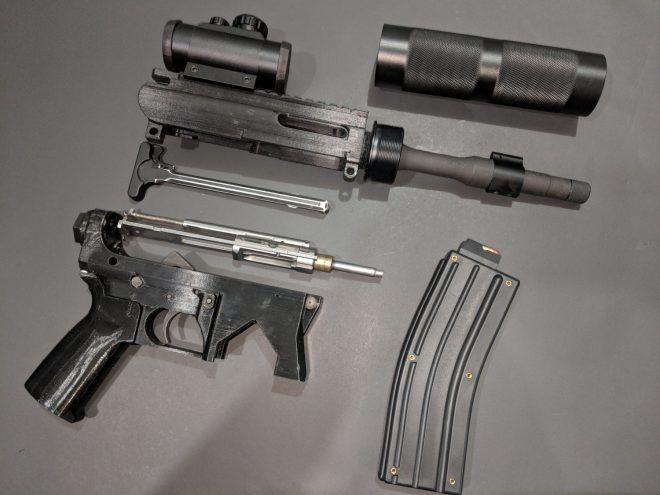 But a second suit filed by the coalition of state attorneys general has kept oversight of the files with the State Department, pending future litigation.
But a second suit filed by the coalition of state attorneys general has kept oversight of the files with the State Department, pending future litigation.
New Jersey Attorney General Gurbir Grewal is a plaintiff in the case. “If a company like Defense Distributed can simply sell printable [gun blueprints] to their customers without running the usual required background checks to make sure someone’s not a criminal, it would blow up the entire regime of firearm laws that we have in this country,” he said.
In 2019, after Grewal sought an injunction to block Defense Distributed from releasing files to New Jersey residents, the company countersued. It alleges that the blueprint files are a form of speech, and that Grewal’s effort to block their release violates the First Amendment. The case has yet to go to trial.
Who is printing guns — and why?The first 3D-printed firearm to make a splash in the popular consciousness was the “Liberator” — a near fully plastic gun designed by a self-described anarchist and ghost-gun advocate named Cody Wilson. (Designs for the Liberator call for a small steel block to be sealed inside the plastic in order to comply with federal law.) Wilson founded Defense Distributed to advance and share the technology, and has initiated many of the group’s highest profile legal battles. In 2019, Wilson was sentenced to probation and ordered to register as a sex offender after soliciting sex from a minor.
(Designs for the Liberator call for a small steel block to be sealed inside the plastic in order to comply with federal law.) Wilson founded Defense Distributed to advance and share the technology, and has initiated many of the group’s highest profile legal battles. In 2019, Wilson was sentenced to probation and ordered to register as a sex offender after soliciting sex from a minor.
Though Wilson’s is the best-known and formally recognized gun printing “company,” the practice is mostly advanced by informal collectives across the internet. These groups, like Deterrence Dispensed and Fosscad, gather anonymously in chat rooms and on social media platforms to crowdsource the development of new gun designs and spread them across the web. They have thousands of members, but remain mostly decentralized, making it difficult for technology companies or law enforcement agencies to police them.
Over the past two years, however, the groups have run up against censorship policies at major tech platforms, many of which prohibit weapons content.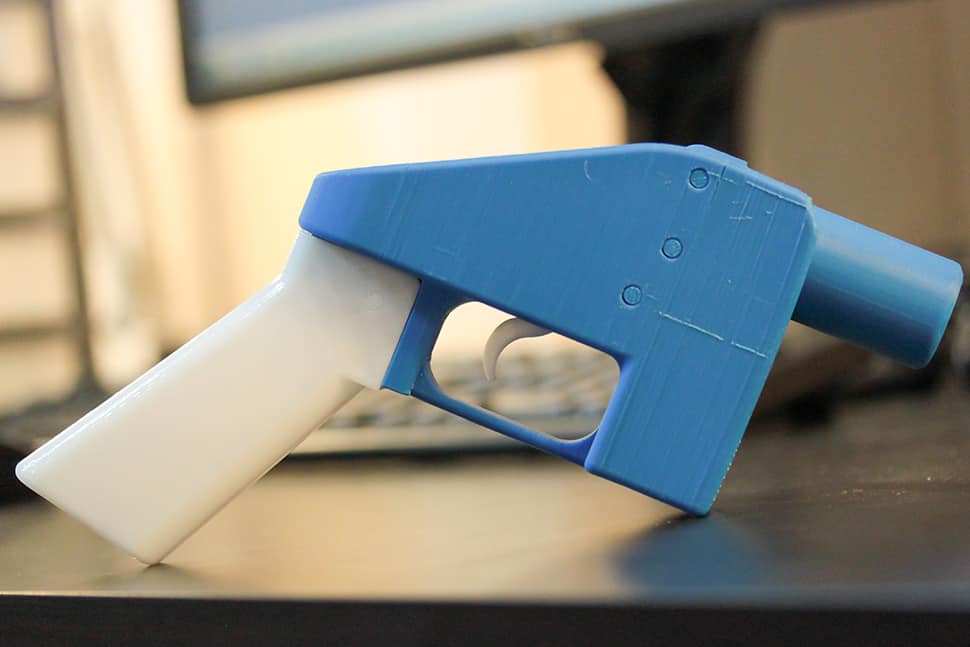 As a result, they’ve been forced to increasingly obscure corners of the internet. Most recently, the operations hub for most of the 3D-printed gun groups — an encrypted chat and file-sharing platform called Keybase — pledged to remove all weapons-related content, and told the groups they would be banned.
As a result, they’ve been forced to increasingly obscure corners of the internet. Most recently, the operations hub for most of the 3D-printed gun groups — an encrypted chat and file-sharing platform called Keybase — pledged to remove all weapons-related content, and told the groups they would be banned.
Proponents of the technology fall into several different camps. Some, like Mustafa Kamil, a creator of 3D-printable guns based in Romania, and a member of the Deterrence Dispensed team on Keybase, think that concerns over homemade weapons are overblown. Gun printing, he says, is mostly the domain of hobbyists like himself: technical experts interested in tinkering and engineering. To 3D-print a gun: “you need to have enough money to buy a printer. Then you need enough expertise and experience to know how to use the printer. If your axis is off by 0.15 millimeters the gun isn’t going to work,” he said. “To buy a black market firearm would be much easier.” Kamil said he’s owned 32 printers and completed two apprenticeships with gun manufacturers.
Others see the potential for armed conflict with the government as the driving force behind their creations. Members of Deterrence Dispensed and Defense Distributed have fashioned a brand out of this perceived threat, adopting popular Second Amendment slogans like “Come and Take It,” “Live Free or Die,” and “Free Men Don’t Ask.” Leaders of the groups share a deep conviction that gun ownership is the only way to ensure freedom: In an interview with Popular Front, a conflict journalism outfit, the founder of Deterrence Dispensed — a man who goes by the username jstark — continuously pointed to the threat of government tyranny as a justification for creating 3D-printed guns and distributing their blueprints. “Just look at the Uighurs in China,” he said, referring to the ongoing genocide of the ethnic minority. “Just look what’s happening to them. No one’s helping them. Nobody does shit. You know what would help them? If they were armed. That would be a deterrence.”
To jstark, identical threats exist anywhere where civilians are largely unarmed, including in Europe, where he lives.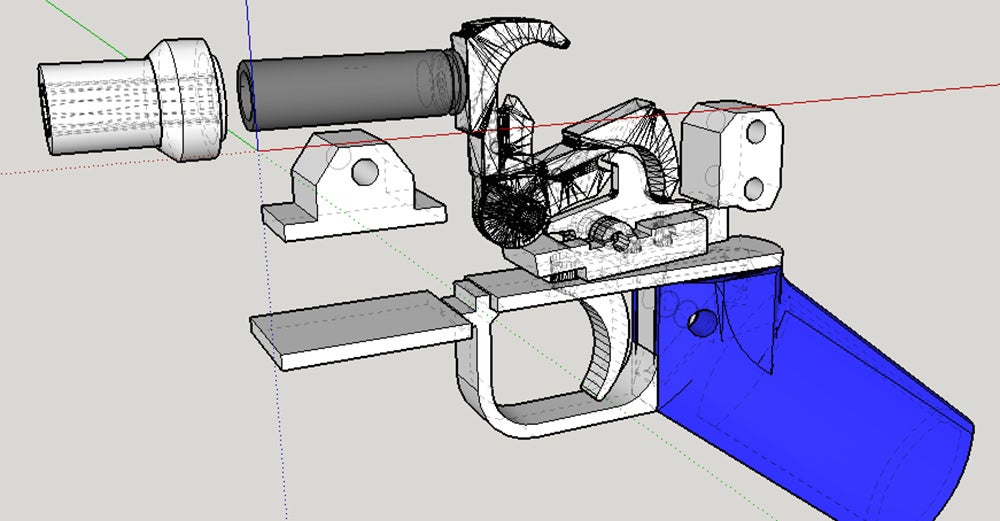 When asked if he would fight police who tried to confiscate his guns, he was frank: “Basically, yes. Live free, or die. These are not empty words.”
When asked if he would fight police who tried to confiscate his guns, he was frank: “Basically, yes. Live free, or die. These are not empty words.”
While politicians and law enforcement agencies have dubbed the advocates of 3D-printed firearms extremists, the movement has no unifying political ideology. Jstark, for his part, said in the Popular Front interview that Deterrence Dispensed has no tolerance for people who wish to harm others: “If they do show through [their actions] that they’re extremists, racists, islamic terrorists — then we would kick them out immediately,” he said. He did not respond to multiple requests for comment.
The alarmism about about looming government tyranny has attracted groups eager to ignite government conflict, particularly in the U.S. Members of groups connected to the boogaloo, a loose-knit coalition of anti-government extremists that advocates a violent civil war, have seen 3D-printed gun advocates as allies in an overlapping struggle.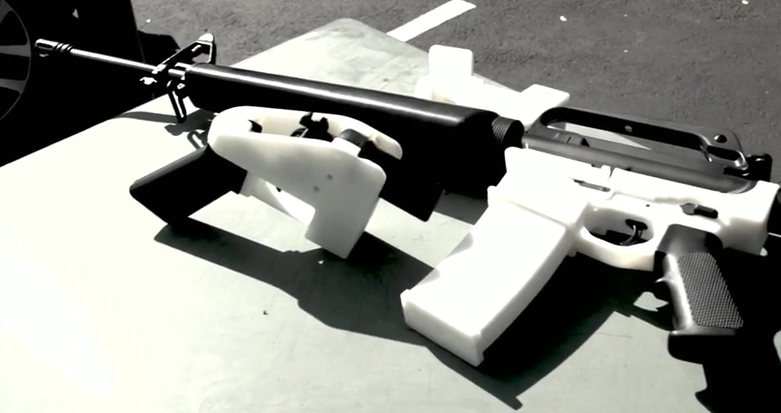 Last summer, Megan Squire, a professor at Elon University, tracked online boogaloo-connected groups as they navigated crackdowns from social media platforms. Many ended up on Keybase, drawn by the large and growing 3D-printed gun community.
Last summer, Megan Squire, a professor at Elon University, tracked online boogaloo-connected groups as they navigated crackdowns from social media platforms. Many ended up on Keybase, drawn by the large and growing 3D-printed gun community.
In early April, Deterrence Dispensed released blueprints for a printable auto sear — a component that can be used to turn a semiautomatic rifle into an illegal, fully automatic firearm — called the “Yankee Boogle,” an apparent boogaloo reference. In September, two boogaloo adherents were charged for allegedly attempting to sell auto sears to representatives of Hamas, the Islamist extremist group. In court documents, prosecutors alleged that one of the defendants in that case said he obtained the auto sears from a supplier who 3D-printed them. In a separate case, federal prosecutors charged a man from West Virginia with 3D-printing auto sears and selling more than 600 of them online, including to several boogaloo adherents. One man who bought the 3D-printed auto sears is accused of killing a police officer and a security guard in California.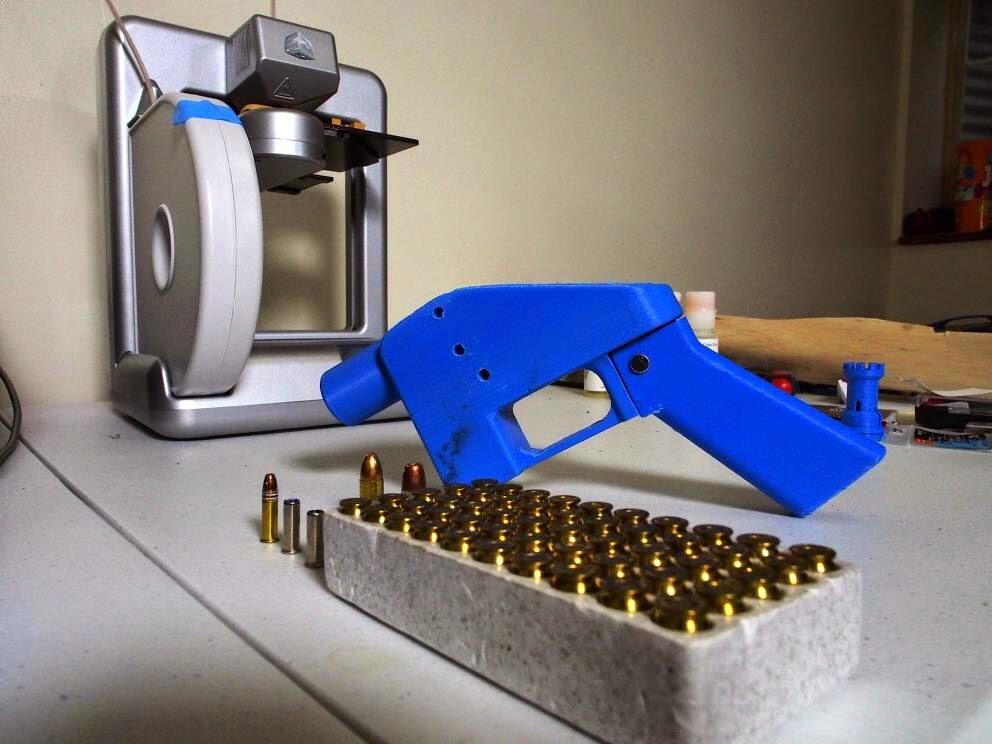 It is unclear if any of the auto sears used in these crimes were designed by Deterrence Dispensed.
It is unclear if any of the auto sears used in these crimes were designed by Deterrence Dispensed.
Correction: An earlier version of this article highlighted a case in which police in Rhode Island said a suspect used a 3D-printed gun in a murder. While police initially made that claim, an analysis by the state crime lab later ruled the method of manufacture “undetermined.” The story has also been updated to include that Defense Distributed’s “Liberator” gun model includes a small metal component for federal compliance.
3D printed guns: Warnings over growing threat of 3D firearms
Published
Image source, AFP
Image caption,The "liberator", an early design of a 3D printed gun
By Chris Vallance
Technology reporter
Last month police said they made one of the largest seizures of 3D printed firearm components in the UK.
Officers from the Metropolitan Police's Specialist Crime Command had discovered what they alleged was a "suspected makeshift 3D firearms factory" at a home in London on 7 October.
Officers said it demonstrated how "the emerging threat of 3D firearms continues to evolve".
The discovery comes as some experts also warn of a growing threat.
Early versions of 3D printed guns were unreliable, single-shot weapons. Now the National Crime Agency (NCA) tells the BBC the guns are "credible and viable".
The NCA's Matthew Perfect, head of the the National Firearms Targeting Centre, says the latest 3D weapons are "stuff that you definitely, definitely wouldn't want to see on the streets in the UK".
"These are automatic weapons. These are weapons that are capable of multiple rounds of discharge," he said.
At present, the 3D printed components only form some of the parts needed to make a gun, at most 80 to 90% of the weapon, Mr Perfect says.
Key metal components such as the barrel typically have to be manufactured in more traditional ways. And the guns still require ammunition.
And the guns still require ammunition.
As a consequence Mr Perfect is confident the guns can still be detected by "normal security processes".
Image source, Metropolitan Police/PA Wire
Image caption,A box of 3D printed firearms components recovered during the Met Police raid
But these firearms are hard to trace as they are made without serial numbers.
Police are seizing 3D printed weapons in greater numbers. From the start of last year there have been 21 recoveries of weapons, a "significant increase" on previous years, though still small compared to conventional weapons, Mr Perfect says.
Difficulties in transporting weapons across borders during the coronavirus pandemic may have contributed to criminals' interest in printed guns, he suggests.
Peter Squires, professor of criminology and public policy at the University of Brighton, said the threat was likely to grow.
"Things have moved quite fast," he told the BBC, adding the pace is only a little over expectations.
"I'd certainly anticipate more of this, the technology is out there ... and the software and designs are available on the web."
And even if some of the "plastic-type" guns he says remain relatively unreliable, they still have the power to intimidate; guns, he notes, are only fired in about 20% of gun crimes.
Image source, Alamy
Image caption,A 3D printed FGC-9 gun being fired
Rajan Basra, senior research fellow at the International Centre for the Study of Radicalisation at King's College London, says the situation in the UK mirrors a trend visible around Europe.
While most violent extremists will prefer established weapons, printed guns are an alternative for those who can't obtain illicit firearms.
"We've seen a steady succession of extremists looking to either make 3D printed guns or even use them themselves," he said.
"We've seen cases in Spain, Sweden, Germany, in the Netherlands, and several here in in the UK. "
He said the clear majority of these cases involved members of far-right groups. Other terrorists groups seem less interested in the technology.
In part, Dr Basra suggests, that is because discussions on far-right extremist forums and communities sometimes included instructions on how to produce 3D printed weapons.
In June, members of an extreme right-wing terror group were convicted at Sheffield Crown Court. It was revealed police had found a partially constructed 3D printed firearm in the home of two members of the group.
Dr Basra warns the weapons are "moving into the mainstream" and on to mainstream internet platforms.
The emergence of new automatic weapons much more powerful than early single-shot designs has also increased their attractiveness.
Among extremists, he said, experts saw recurrent references to one semi-automatic model, the FGC - the name is an acronym expressing, in strong language, opposition to gun control.
"It's a specific gun that was designed to be used with parts that aren't regulated in the EU," Dr Basra said.
The weapon was posted online in spring 2020 with step-by-step instructions. It comes with an over 100-page manual, and videos on how to go through each step of the process of manufacture, Dr Basra added.
Mr Perfect, from the NCA, says modified versions of the gun can be "as good as any automatic firearm that you would buy from a reliable manufacturer".
Image source, Europol
Image caption,A 3D printed gun on display at a Europol conference on the topic
But police are keen to stress that gun violence in the UK is still relatively uncommon - about 35 homicides a year Mr Perfect estimates.
And use of an automatic weapon would attract a lot of police attention. But criminals want these weapons to intimidate other criminals.
For that they need a credible weapon, and 3D guns are now earning that credibility, due to better designs, and better printing technology - technology that is changing and improving all the time.
Christian Goblas, a ballistics expert at France's University of Rouen, recently told Euractiv "3D metallic printing" could become affordable in the next decade, which could make self-made weapons more durable and reliable.
And Europol told the BBC that national authorities within the EU have uncovered a number of cases of the production, sale and possession of 3D printed weapons and parts.
Some of the weapons and components were offered on illicit dark web marketplaces, which Europol said showed the synergies between the firearms trade and cybercrime.
The organisation noted that while producing a complete 3D printed firearm was still challenging "rapidly evolving advanced technology may cause this to emerge as a more significant threat in the near future."
But Dr Basra warns of another risk. Terrorists have a history of copying methods that have previously been shown to be effective. He said there was a rise in terror attacks where a vehicle was driven into crowds after the 2016 Nice attack.
He says if 3D printed weapons are used in an attack that causes mass casualties, that would in turn send a message that "3D printed guns are viable, and they're effective".
- Firearms
- Gun control
is it possible to print pneumatic and firearms
Is it possible to make a gun on a 3D printer and is it legal?
Today's 3D printers offer enormous possibilities. They can print products of almost any complexity. Until quite recently, it was difficult to even imagine that a plastic weapon could shoot. However, it is already possible to make a pistol on a 3D printer, which, although not reliable, still fires live ammunition.
Can firearms be 3D printed?
Back in 2013, a young American gun fighter proved that plastic guns could be 3D printed. He was the first in the world to make a pistol in this way, in which only the striker was made separately from metal. All other parts were printed on an FDM printer.
Today's 3D printers are capable of printing any CAD model, and these models of firearms have been available for over 10 years. If in previous years their printing required professional skills, now almost any user can master them. With a 3D printer and a finished model, it became quite possible to print a gun. Another thing is that such "creativity" is punishable by the laws of most countries.
The evolution of 3D printed weapons
Despite all the prohibitions and restrictions, the evolution of 3D printed firearms is moving at a great speed. The beginning was laid by the single-shot plastic pistol Liberator by American K. Wilson, which appeared in 2013. It had a simple design and was chambered for 380 ACP. Already after 10-12 shots, this weapon became unusable. However, the very possibility of printing firearms served as an impetus for the development of the idea. The author of the first pistol himself founded the Defense Distributed company, which began to actively improve the technology.
One of the ways to increase the durability of weapons was to increase the number of their barrels. At the beginning of 2014, the Japanese Y. Imura makes a 38 caliber Zig Zag pistol. He was able to fire up to 6 shots non-stop. The author of the weapon was recognized as a criminal and convicted.
The next step was the production of a six-shot revolver by J. Patrick in 2015. The PM522 Washbear has been shown in action on YouTube. The weapon was noticeably safer for the shooter compared to previous versions, but still allowed to fire only a few dozen rounds.
The first semi-automatic pistol for a 9 mm bullet appeared in 2016 under the name Shuty-MP1. It was developed by a handicraft gunsmith who hid under the pseudonym Derwood. It wasn't exactly a plastic weapon. The author used some metal parts from factory pistols - a barrel, a firing pin, a bolt and several springs. This made it possible to ensure a rate of fire of more than 46 rounds / min. However, when changing the store, the plastic case had to be cooled. In 2017, the same master proposed an improved model - Shuty AP-9.
The main contribution to the development of 3D printed weapons technology was made by Defense Distributed, which united a group of like-minded activists. First, these enthusiasts won legal proceedings in the United States and obtained permission to 3D-print weapons, which greatly expanded their capabilities. Secondly, they were able to set up a professional business with product testing and quality control. As a result, in 2018–19 they developed numerous models of a variety of firearms - from pistols to carbines. They posted over 30 files for printing original gun parts. Most of them were plastic, and the metal parts were not made from purchased, ready-made elements, but from simple metal profiles (tubes, strips, etc.), which are sold in ordinary hardware stores. This made it possible to exclude the use of parts patented by gunsmiths.
At the moment, the semi-automatic carbine FGC-9, developed on the basis of the Shuty AP-9, has become the pinnacle of "creativity" of Defense Distributed. At the same time, there is not a single factory part in it. The barrel for the 9 mm cartridge is made of steel pipe using electrochemical processing.
Where can I get drawings and what should I look for?
Gun manufacturing bans make it much harder to get blueprints and models of guns for 3D printing. The right to free placement of information was achieved only by Defense Distributed. Their website provides free access to drawings, models and technologies. Other information can be found on the Internet, but they are usually illegal.
When choosing a model, pay attention to the following information:
- material used;
- cartridge for which the model is designed;
- number of cartridges in the magazine, rate of fire;
- operating time before failure.
It is important to clarify which metal parts will need to be purchased separately, in addition to plastic for printing on a printer.
What does the law say in different countries?
The only country where firearms can be 3D printed is the United States. Gun Control Act 19 applies here68, giving Americans the right to make weapons, but only for personal use. Only one limitation is put forward: it must be determined by metal detectors, that is, it must have a metal element. In virtually all other countries, homemade manufacture and repair of weapons for any purpose is prohibited by law. In Russia, printing it on a 3D printer falls under the Criminal Code of the Russian Federation and is punishable by imprisonment.
Should we be afraid of plastic weapons?
The question of how dangerous a weapon printed on a printer is becoming increasingly important. Despite all the prohibitions, it is extremely difficult to control the spread of technology around the world. The availability of 3D printers and the increase in their functionality make it possible to master the production of plastic guns at home. How dangerous is such a weapon?
Most experts agree that currently printed weapons are more of an interesting toy. It is quite expensive and is designed to carry out only a few dozen shots. Moreover, such pistols are quite dangerous for the shooter himself with live ammunition, because they can explode in their hands.
However, the danger cannot be underestimated. It is easier and cheaper for a "serious" criminal to buy illegal military weapons than to make them on a printer. At the same time, there may be "enthusiasts" who, for their own interest, can make a pistol and try it out in action. Such inadequate people represent an undoubted danger. In addition, the temptation is great for terrorists. Metal detectors do not detect a plastic gun, which means that it is easier to carry it, for example, on an airplane.
Important! Plastic weapons have a very small resource. At the same time, sometimes just one shot is enough to kill a person.
3D printed firearms have the following advantages:
- the ability to make military weapons at home;
- light weight;
- availability of materials;
- Ability to copy famous weapon models.
Always remember that there are significant disadvantages:
- illegal production;
- high cost of weapons;
- very small resource and limited rate of fire;
- danger to the shooter himself.
Currently, plastic weapons have more disadvantages than advantages, and most importantly, you can get a real prison term for making them.
Prospects for printing weapons
The potential for 3D printing of firearms is far from exhausted. The expansion of equipment capabilities and the development of innovative materials indicate that in the near future such weapons may approach military weapons in terms of characteristics. In the future - a significant increase in the resource and the provision of automatic firing.
Significantly increases the reliability of printed pistols and carbines SLS technology using metal powder. Such weapons already differ little from the factory metal models. While it is very expensive, which significantly limits the application. However, over time, the material will become cheaper, which means it will become more affordable.
Printing firearms on a 3D printer has become a reality. Despite its extremely low performance and reliability, interest is growing in it. Experts predict that the printing of weapons will become widespread, and it is impossible to stop such production. There comes a time when measures should be taken at the legislative level to establish effective control over this process.
- March 21, 2021
- 6392
Get expert advice
The 3D model of the revolver is again available for printing on your 3D printer.
top sellers
-
Bearing 604UU U604ZZ
U-bearing U604ZZ 604UU 4*13*4
35.00 UAH
-
Thermal mat for 3D printing 200 x 200 mm
3D printing thermal pad
150.00 UAH
-
Buy epo3d+ 3D printer
Epo3d+ Ukrainian FDM 3D printer on HIWIN rails.
Thanks to reliable...
UAH 35,000.00
-
ABS granules
ABS granules for extrusion
400.00 UAH
-
PLA
PLA environmental plastic from Plexiwire. 100% advance payment....
UAH 375.00
-
Buy ABS plastic (ABS)
ABS plastic from Plexiwire. 100% prepayment. Free shipping...
UAH 220.00
-
Mini motor reducer 12v 100 rpm
high torque mini electric motor.
Its size is...
150.00 UAH
-
Nozzle for 3D printer 1.75 mm, for E3D and MK8 hotends
Nozzle for 3D printer 1.75 mm 0.2/0.3/0.4/0.5
35.00 UAH
-
PETG plastic for 3D printer
PETG plastic from Plexiwire. 100% prepayment. Free...
UAH 360.00
-
SHF-20 shaft support
SHF-20 shaft support is used for CNC
60.00 UAH
-
A4988 stepper motor driver
35.
00 UAH
-
Buy epo3d 3D printer
Ukrainian epo3d 3D printer built on the basis of modern kinematics...
UAH 18,000.00
All best sellers
Information
The 3D model of the revolver is again available for printing on your 3D printer.
After a lengthy litigation, Cody Wilson and his organization Defense Distributed won a lawsuit against the US State Department to return online 3D models of a gun.
Back in 2013, Cody successfully fired a bullet from the world's first fully 3D printed gun. Since then, fears that a purchased 3D printer could be used to make 3D weapons have ricocheted at government meetings and in the mainstream media.
Shortly after the test, he decided to upload a 3D CAD model dubbed Liberator to his website Defcad. com., which was uploaded over 100,000 times in a few days, leading the US State Department to send a letter demanding that the drawings be removed.
After five years of wrestling with the Justice Department in court, a settlement has finally been reached, and this appears to be a major victory for Wilson. The court's ruling states that the government's ban on these CAD files violated the First Amendment's right to the Defense. After, it was also proved that non-automatic firearms up to 0.5 caliber are not military. As a result, the court decided to return the 3D-Gun models back to the network.
So, starting from August 1, 2018, it is planned to place 3D models online again. Not only does Wilson have the right to publish his own 3D printed designs of the revolver, he also opened up a Pandora's box that could impact the distribution of DIY weapons in the United States and the rest of the world.
His company is relaunching the 3D firearms repository and will include the infamous disposable revolver, as well as AR-15 frames and other semi-automatic DIY weapons.



